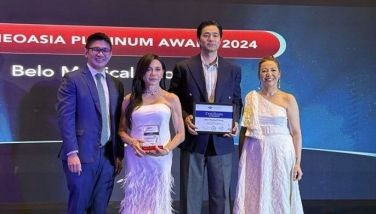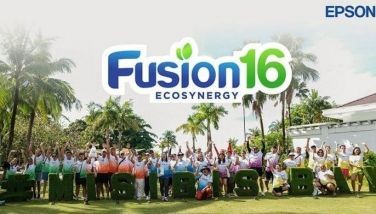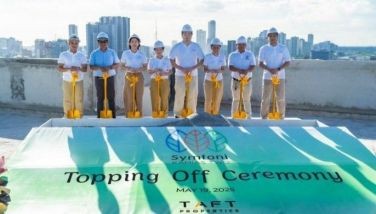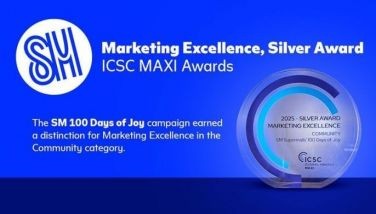Builders of the future
MANILA, Philippines - In a place plagued by high unemployment, low rate of students getting into college and limited development of local skills, what can the youth hope for?
Most of the young people of Kananga, a second-class municipality in Leyte, struggle to finish at least high school – few ever make it to college – before going off to work to help their families. As if poverty and lack of opportunities is not enough, this province also has to deal with the effects of sitting on the typhoon belt, the frequent calamities further hindering economic development.
But there is new hope for the youth of Leyte.
Last month, a community development project called the Kananga-EDC Institute of Technology (KEITECH), a post-secondary technical vocational training center, was launched by the municipal government in partnership with the Energy Development Corporation (EDC) and the Technical Education and Skills Development Authority (TESDA) in the region.
The 43,000 people in Kananga town mostly depend on subsistence farming. Unemployment rate is 15 percent and a mere one percent of high school graduates go on to college.
Leyte is host to the geothermal complex owned by the EDC, the second largest producer of geothermal energy in the world, next only to the United States. However, Leyteños living around the geothermal production field reportedly have an average household income ranging from P10,000 to P15,000 annually.
Thus KEITECH offers a chance for the youth of Kananga and other towns in the area to have a brighter future.
What makes this institute different is that it does not try to be all encompassing in its curriculum. Rather, its courses are tailored to meet the demands and trends in work opportunities, basing its courses on the “top 30 qualifications of both local and overseas job vacancies.”
The Kananga-EDC Institute of Technology, located in barangays Rizal and Hiluctogan, specifically addresses the lack of technically skilled workers for local and global employment.
“What the industry needs is what the curriculum is patterned after,” explains KEITECH instructional services head Susanto Cormero.
The training program also devotes extra hours to values formation, focusing on self-discipline and proper work attitude, Cormero adds.
KEITECH offers training in what it has identified as the most in-demand sectors: metals and engineering, construction, and tourism, health and social services.
Citing figures from TESDA, EDC president Paul Aquino says that the demand for skills in these areas “has been consistently high in both domestic and overseas labor markets.”
“At the Leyte Geothermal Production Field, there was a time when we needed around 1,000 welders at a daily rate of between P300 and P500, but we were only able to hire 50, all of whom came from Ormoc City,” Aquino recalls.
In the next five years, he says, KEITECH’s course offerings will be expanded to 10 areas. “Eventually, we hope to offer 21 in the succeeding years.”
Under the current program for the courses in metals and engineering and construction, the student will be trained on core competencies on masonry, plumbing, building wiring installation and shielded metal arc welding.
For the tourism, health and social services course, the trainee will learn how to prepare and cook hot meals leading to commercial cooking, food and beverage services and household services.
A KEITECH student will undergo 10 months of training in both classroom and hands-on settings. Four times a week, the trainees will take up competency-based education and will be housed in dormitories within the compound. 
The Kananga-EDC Education Foundation is set up to underwrite the first three years of the school’s operation. The trainees will be provided with everything they need – school supplies, uniforms, reference materials, allowance and even insurance.
“Wala po kasing pampaaral ang mga magulang ko kaya ako nag-apply dito. Libre lahat pati sapatos (My parents don’t have money for my schooling so I applied here. Everything is free, even my shoes),” says Jomar Clatero, who is taking metals and engineering. He adds he already has gained experience from watching and helping his father work as a welder.
“Hilig ko din kasi ang (I also like) welding,” explains the 17-year-old, one of the pioneering batch of 120 students that commenced training last June.
“Malaking tulong po ito sa amin. Sa akin, maayos na makapagtrabaho sa ibang bansa para mas malaki ang suweldo (This is a big help to us. For me, it might be best if I get to work abroad to get a bigger salary),” Clatero says.
The family of Joy Impas, another KEITECH trainee, looks forward to his success in completing the program and landing a job soon after, also preferably abroad.
The third of six siblings, Impas says he is not scared that his family is counting on him to lift them out of poverty.
“Tama lang naman na umasa sila sa akin (It’s only proper that they’re counting on me),” says Impas, who is also taking up metals and engineering.
As a Sangguniang Kabataan official, Impas recalls their mayor solicited the SK’s help to encourage the young to apply for the KEITECH program.
Both Clatero and Impas say they eagerly await opportunities that lie before them, counting on KEITECH’s job placement service that will facilitate the employment of certified graduates. According to KEITECH, this will be accomplished by mapping out employment prospects, utilizing “labor market intelligence reports” and job kiosks on the Internet, through tie-ups with companies and industries, job referrals and job fairs. Free passport application assistance will be extended to graduates who are able to secure employment abroad.
The role of graduates, however, doesn’t end there. They have a chance to “pay it forward” as KEITECH encourages them to sponsor incoming trainees “upon achieving gainful employment.”
Under the sponsorship scheme, graduates, upon first year of employment, will support at least one incoming student by contributing an amount equivalent to the training expense, KEITECH explains.
“The adopt-a-trainee system is based on the pay-it-forward philosophy where we aim to perpetuate the cycle of prosperity and goodwill among our countrymen.”
Impas says he looks forward to being part of this cycle of sharing knowledge and opportunity with those who share his dream of making it out of poverty.
To keep the program running, the EDC and the local government unit will each allocate P4 million annually for the center’s continuous operation for three years. The three-hectare campus is envisioned to have 20 buildings that will house fully-equipped training centers, workshops and dormitories.
The mayor is optimistic that the success of this community development project will increase employment opportunities for the youth, and subsequently increase tax revenues for the LGU, resulting in the overall improvement of living standards in the municipality.
Lopez says that it is KEITECH’s goal to “breed the next generation of high-caliber Filipino manpower” that could be part of, or even lead, in building some of the world’s biggest and most ambitious projects.
Lopez reminds future graduates that “when one recognizes the value of the source of talent or acquired skill, he will be able to find a place in any society in the world. With this in place, you will find yourself in a position where you inspire other Filipinos to take national and individual pride.”
- Latest
- Trending

















